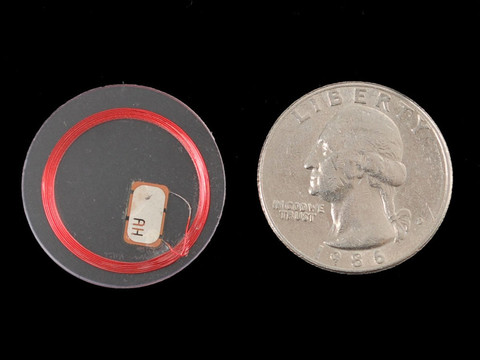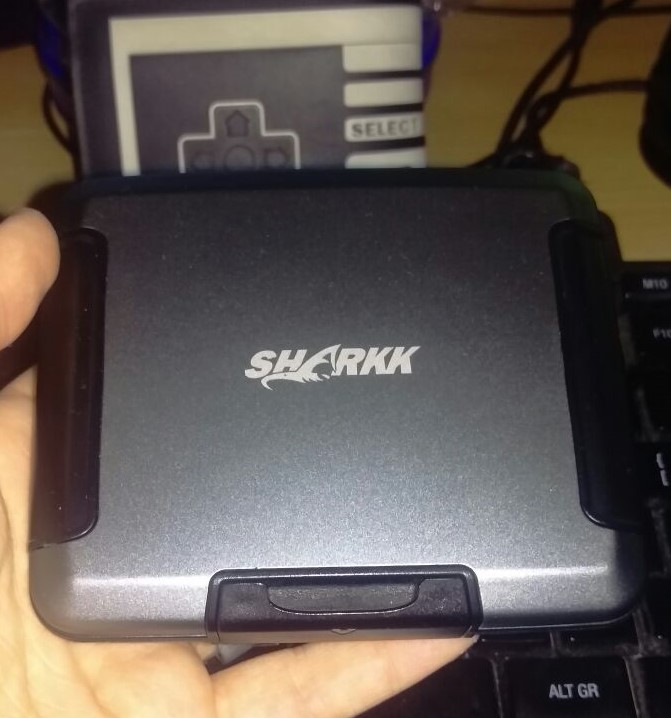RFID - What is it and what does it mean for me?
What is RFID? RFID stands for Radio-Frequency IDentification, this refers to a small electronic device that consist of a microchip (typically carrying around 2,000 bytes of data) and an antenna. RFID devices serve more or less the same purpose as a barcode or a magnetic strip on the back of your credit and debit card; It provides a unique identifier for an object of that type.
How does RFID work?
An RFID system has 3 parts:
- Scanning antenna
- Transceiver (with decoder)
- Transponder
The transponder is the actual RFID tag which contains the information that is used. The antenna puts out short range radio signal that will do two things: Firstly it provides a means of communicating with the transponder and secondly (in the case of a passive tag) it provides the transponder with the energy to communicate.
Here are the topics regarding RFID I'm going to cover in this post:
- Active and Passive RFID tags
- What can RFID be used for and the concerns this raises
- What makes RFID better than barcodes?
- Contactless credit and debit cards
Active and Passive RFID tags
The defining difference between an active and a passive tag is that an active tag has an external power supply that partially or fully powers the transponder.
Active tags
Active tags can be read at distances of 100+ feet and can actively make use of other sensors to create specific working conditions thanks to it's external battery.
eg. A doorframe that has an embedded active tag could when someone passes through it (via weight detection for instance) and tag them as entering or leaving a room.
However active tags cannot function without an external battery, which limits the lifetime of the tag. Because of this external power battery the tag will also be larger than a passive tag, which can limit it's applications. Aside from maintenance costs (replacing the battery), dying batteries can also cause a variety of misreads which can be very expensive depending on how the tag is being used.
Passive tags
Passive tags can only be read at short distances typically around 3 ft (ultrahigh-frequency (UHF) transponders can be read from 15 to 20 feet) in free air, this really limits what passive tags can be used for in real-world applications.
However because passive tags are self powered (using Inductive Coupling) these tags have a lifetime of 20+ years, they are also much less expensive to manufacture than Active tags. Because these tags are literally just 3 components they can be absolutely tiny and can be applied to pretty much whatever you can think of due to this size factor.

What can RFID be used for?
Because RFID tags are used so widely by pretty much every retailer, it's really really easy to pick up some info using something like a 13.56 Mhz sniffer/receiver or even an app for your phone! You could for instance sit down for a coffee in town scanning peoples shopping bags to see what they've bought.
It does get slightly more scary though, what if someone scans your work ID badge and decides to use it?
It's especially worrying that these low-grade passive tags don't have the computing power to encrypt the data it stores adequately, the most that these tags can handle is a simple pin/password style protection. Although this paves the way for various commercial uses such as "self-scan" supermarket shopping it leaves a lot open to any interested individual.
Rven if the data is encrypted companies can still be actively seek RFID items and track your movement using them. With most important forms of ID including RFID tags these days, an airport could track you using your passport from the moment you get to the car park on site until your plane leaves the airport.
What makes RFID better than barcodes?
RFID Advantages:
- RFID does not require direct line of site from tag to receiver.
- RFID tags are reusable and non-intrusive on virtually any product.
- RFID tags can have the information they hold edited.
RFID Disadvantages:
- RFID tags are more expensive.
- Store-side maintenance can be much higher when using RFID tags.
- Without proper precautions RFID tags could be edited could occur such as changing the price of items.
So even through there are many advantages to using RFID tags over barcodes, without proper security precautions in place things can go drastically wrong without anyone even noticing.
Contactless credit and debit cards
The addition of RFID tags to credit and debit cards has been around for the 6 years or so now and over the past 2-3 years it's really picked up with various NFC payment methods popping up from ApplePay to Android Wallet. This is because of a more widespread use of contactless payment cards.
Initially contactless payments were capped at around £20 per transaction and soon after manufacturers started to increase the encryption standards used for these cards as issues were made apparent. Since then we have had various updates to the transmission standards used by contactless payments such as the RFID never transmitting your card number, but instead a unique transaction ID.
What prompted me to write this article was a gift from my girlfriend, a shiny new wallet:


This wallet blocks RFID signals (so no one can sniff my goods!), it's also pretty nifty. It's a good size, keeps all my cards and made me actually get rid of others. You can read my review here on Amazon.
I'll be back with another post soon although I'm not quite sure of the topic yet.. Til then!
